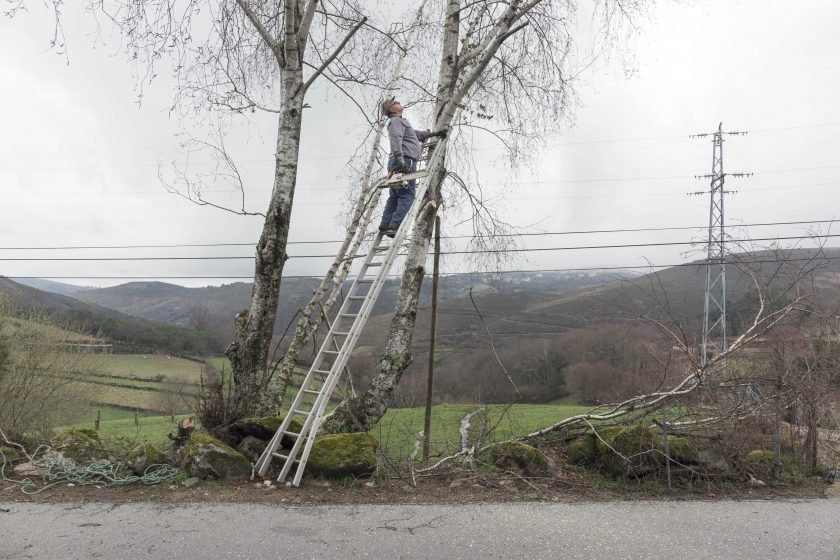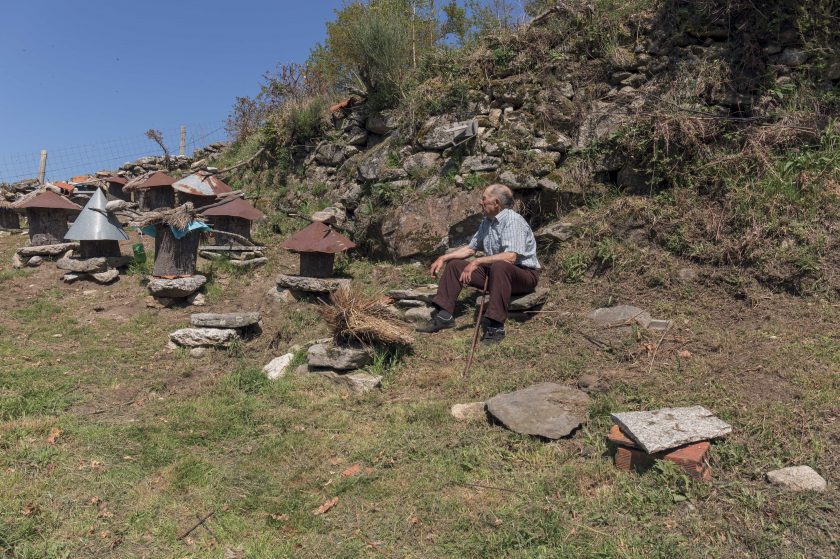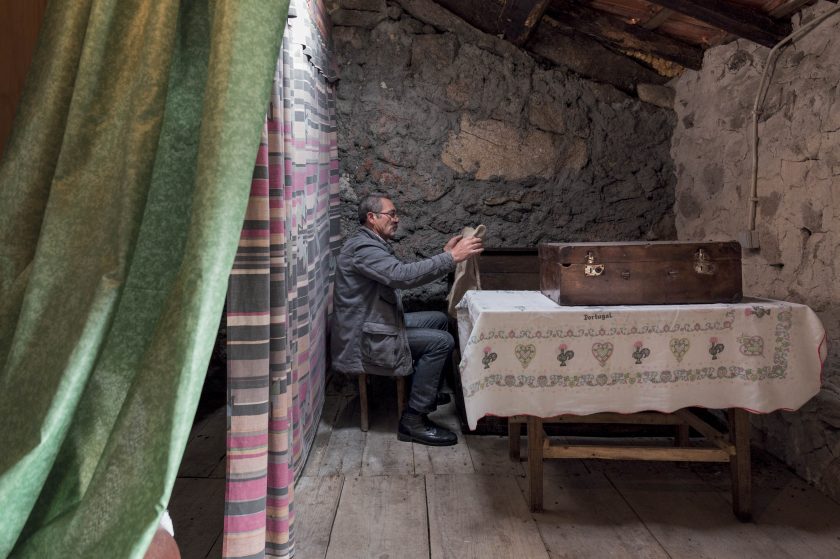





















Related Projects
PEDRA E PELE
Na consciência de uma procura pela narrativa plural, o projecto apresentado baseia-se num conceito de relação directa e imersiva entre as pessoas e o território, o quotidiano: pedra e pele.
Enquanto autor, num primeiro contacto com aquilo que abordo, é necessária uma clareza sobre o que pode ser uma construção imagética. A origem, o desmantelamento de uma realidade, em mutação, em reorganização constante. Parada do Monte é um lugar onde os socalcos se poderam da forma de estar, onde os caminhos são uma viagem discursiva pelo próprio território. Cada curva ou desnível, criam aquilo que considero um território que nos consome, que deixa em aberto aquilo que pode ser o foco de uma narrativa sequencial, de uma narrativa imagética.
Durante o trabalho de campo, são diversas as perspectivas, as diferentes relações que se criam, deixando por vezes que um gesto tautológico nos remate e cesse o olhar. É então, que na contrariedade de cair num esquema que valha pela simplicidade formal, que nos expandimos para o intrínseco do discurso, na virtude de querer relacionar aquilo que, no seu próprio lugar existe por si só. A pesquisa realizada à priori não acentua nem fica perto da pluralidade de emoções que este território nos dá pelo contacto directo, físico. É importante no fim de todo o processo, perceber que o peso de pisar aquilo que vivemos com o nosso corpo é a fundação, a grelha para uma solução que se desenha por si e para si. O autor torna-se assim um organizador, construtor de relações e impressões.
Assim que o meu olhar cai sobre este território e estas pessoas, começa a acontecer a construção da linha que atravessa a origem do lugar e a forma como este é vivido e construído no seu dia a dia.
O trabalho fotográfico é assim uma construção pelo contacto, pelo discurso paralelo entre o olhar e o ser, o ver e o querer.
_
In the awareness of searching for plural narrative, this project is based on a concept of a direct and immersive relationship between people and territory, everyday life: rock and skin.
As an author, during that first contact with what I’m about to approach, clarity is necessary regarding what an imagistic construction might be. The origin, the dismantling of an everchanging reality, in mutation, in constant reorganization. Parada do Monte is a place where the terraces take over the way of living, of being, where the paths are a discursive journey through the territory itself. Every curve or slope creates what I consider to be a territory that consumes us, retaining the possibility of what might be the focus of a sequential narrative, an image narrative.
During the field work, there are numerous perspectives and different relationships are created, sometimes allowing for a tautological gesture to stop us in our tracks, to cease looking. It is then, in the contrariety of falling into a scheme that is valuable for its formal simplicity that we expand to the intrinsic of the discourse, in virtue of wanting to relate what exists by itself in its own place. A priori research does not accentuate nor stay close to the plurality of emotions that this territory gives us through direct, physical contact. It is important at the end of the whole process to realize that the weight of stepping on what we live with our body is the foundation, the grid for a solution that draws itself and for itself. The author thus becomes an organizer, builder of relations and impressions.
As soon as my gaze descends on this territory and these people, so it begins the construction of the line that runs through the origin of the place and the way it is lived and built day upon day.
The photographic work is thus a construction by contact, by the parallel discourse between looking and being, seeing and wanting.
- Type: MDOC, FOTOGRAFIA
